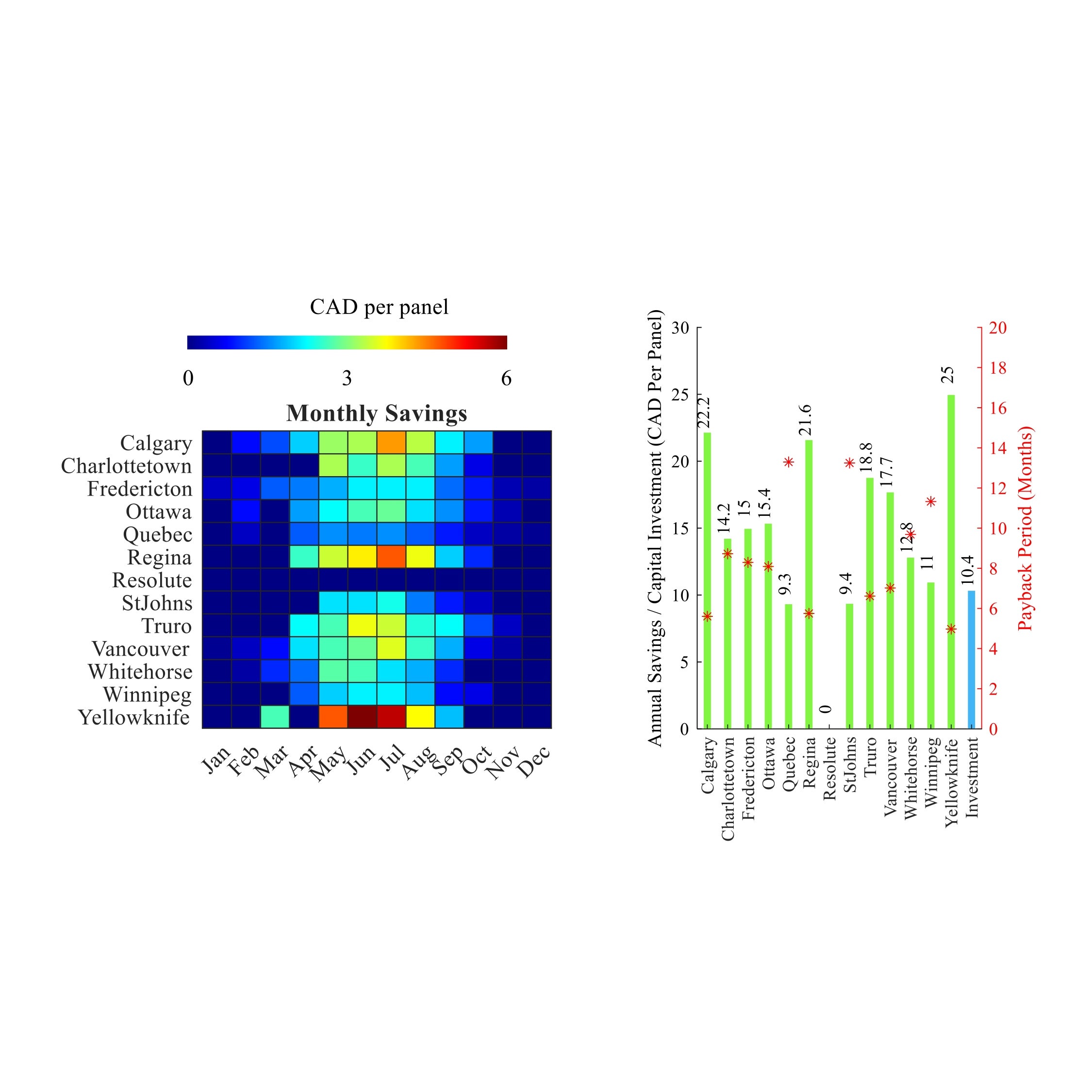images
To decrease PV panels temperature and increase power generation
Energy & Environment
Description
The majority of sustainable buildings integrate solar PV panels for energy production. The most common drawback of PVs is the efficiency degradation at elevated temperatures. Using EnergyPlus and MATLAB, the current work proposed a novel integration of an optimization method and an energy flow model to decrease the PVs’ temperature and increase the power generation. The model decision variables were the water mass flow rate, the eccentricity between pipes, and the PV tilt angle. Such decision variables were optimized using Powell’s Conjugate Direction Method. The optimization was performed for 13 different cities covering all Canadian provinces for each of the 12 months. Results showed that the optimum eccentricity for all cases tended to the lower limit, 0.1 m, to increase the number of pipes and hence increase the surface area enhancing heat transfer. Consequently, such a high surface area decreased the required water, and the optimum required water flow rate was 0.44 kg/s maximum. The optimum tilt angle decreased in summer to face the high sun elevation and increased in winter to compensate for the decrease in the sun elevation. The proposed system was most efficient in Vancouver City in the summer when the energy generation was increased by an average of 58%. In all cities, the average power increments in summer and winter were 67.5 and 23.5 W/panel, respectively. The cooling system initial investment, which was 10.4 CAD per panel, achieved monthly savings of up to 6.1 CAD per panel and annual savings of up to 25 CAD per panel. For all optimized cases, the simple payback period was between 5 and 13 months.







